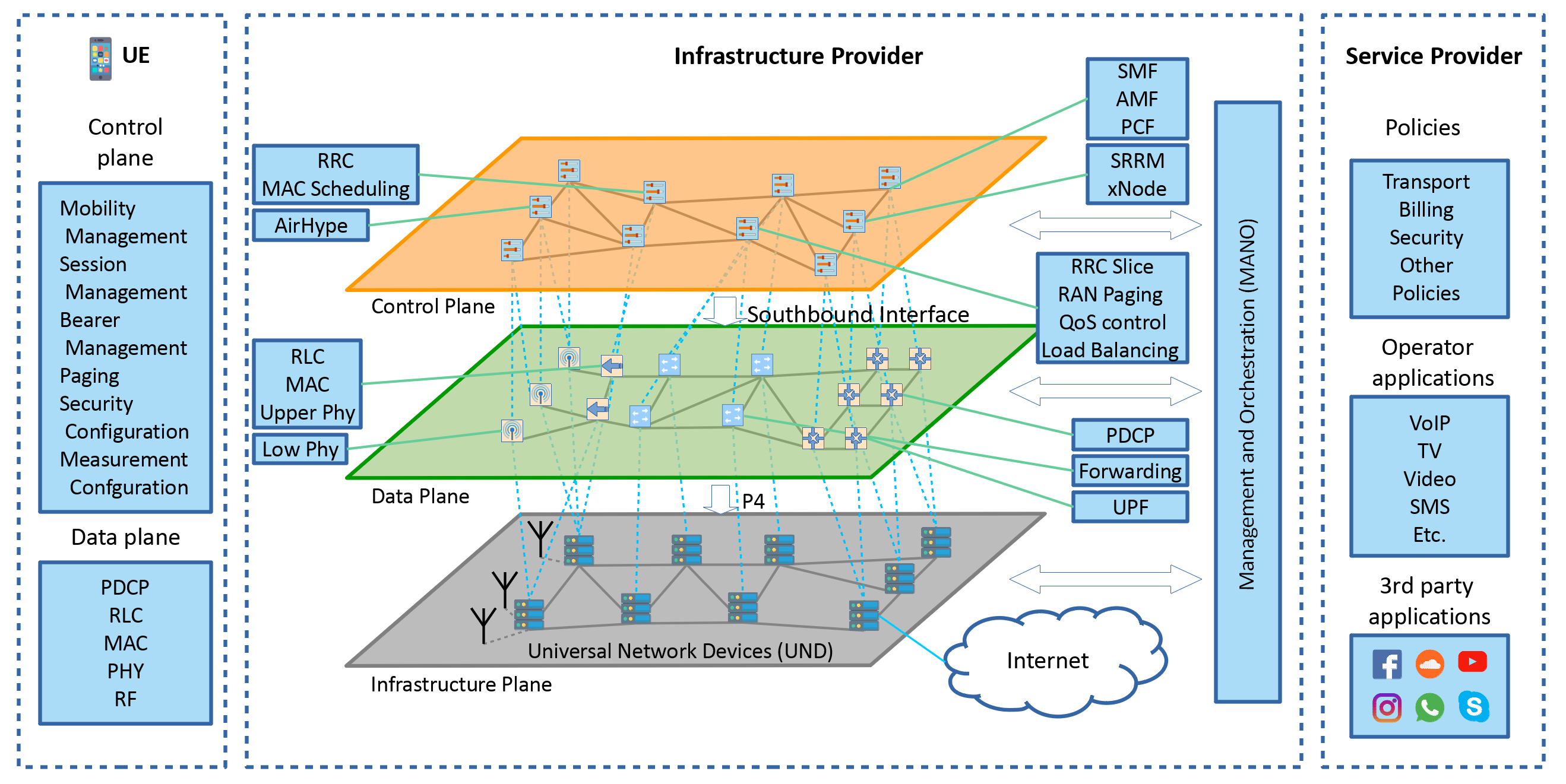WNL Designs a Modular and Reconfigurable Architecture for 5G Systems

WNL team has designed a novel architecture called ARBAT for 5G systems. It introduces innovative features which aim at providing highly efficient Quality-of-Experience aware communications in heterogeneous environments with low CAPEX and OPEX. Specifically, by following the virtualization paradigm, it can easily bring the external data network closer to users, thereby reducing latency and enabling the URLLC use-case.
The ARBAT is presented in the paper, called ‘ARBAT: A Flexible Network Architecture for QoE-aware Communications in 5G Systems’ published in December 2018 in Computer Networks. In this paper, the international WNL team of I.F. Akyildiz, A. Kak, E. Khorov, A. Krasilov, and A. Kureev showed the qualitative evaluation in state of the art in the domain of cellular networks based on Software-Defined Networking (SDN) and Network Function Virtualization (NFV). Many existing solutions have significant disadvantages and drawbacks such as physical centralization of control functionalities, virtualization without consideration for SDN, static function distribution, the absence of radio resource virtualization solutions, and a lack of support for multiple RATs. While physical centralization decreases development and deployment costs, it also leads to poor scalability and flexibility.
To overcome the shortcomings above, WNL designed a new architecture called ARBAT after the famous street in Moscow. ARBAT illustrates a new vision on infrastructure plane, data plane, control plane, and management and orchestration entity.
The novel architecture is characterized by many innovative features such as the Universal Network Device and Unified Cellular Network concepts, multi-slice modular resource management with the AirHYPE wireless hypervisor, network-user application interaction through the xStream platform, and simplified multi-tenant orchestration through ServiceBRIDGE.
ARBAT is considered to be the most feature-complete Software-Defined Mobile Networks (SDMN) architecture based on its infrastructure and control plane design, multi-layer RRM framework, ability to adapt to a variety of use-cases and fronthaul options, high-scalability, multi-RAT support, and modularity.
WNL team is in the process of fully implementing the ARBAT architecture and making it publicly available soon.
Prof. Ian F. Akyildiz is the Ken Byers Chair Professor in Telecommunication and the Chair of the Telecommunications Group with the School of Electrical and Computer Engineering, Georgia Institute of Technology, and the Director of the Broadband Wireless Networking Laboratory. He is the Editor-in-Chief of Computer Networks (Elsevier) Journal since 2000, the founding Editor-in-Chief of the Ad Hoc Networks Journal (Elsevier) in 2003, the founding Editor-in-Chief of the Physical Communication (PHYCOM) Journal (Elsevier) in 2008, and the founding Editor-in-Chief of the Nano Communication Networks (NANOCOMNET) Journal (Elsevier) in 2010. He received numerous awards from ACM and IEEE. His current research interests are in Nanonetworks, 5G Cellular Networks, Software Defined Networking, Terahertz Band Communication, and Underground and Underwater Sensor Networks.
Wireless Networks Lab is a ‘Megagrant’ lab established in 2017 around the project on Cloudified Wireless Networks for 5G and beyond, led by Prof. Ian F. Akyildiz. The team regularly reports at leading IEEE conferences, runs industrial projects and contributes to standardization of wireless networks.
